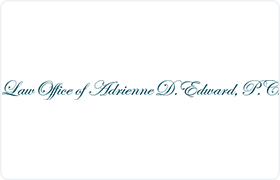Peconic Felony Lawyer, New York
Sponsored Law Firm
-
 x
x

Click For More Info:
-
Law Office of Adrienne D. Edward P.C.
549 Summit Ave Jersey City, NJ 07306» view mapCriminal Defense & Family Law Effective Legal Strategies
Our practice is committed to serving the unique needs of every client. We strive to make you feel heard, valued, and empowered at every stage of the legal process.
201-420-8850
Not enough matches for Peconic Felony lawyer.
Below are all Peconic Criminal lawyers.
Mel Jacoby
Accident & Injury, Bankruptcy & Debt, Divorce & Family Law, Criminal
Status: In Good Standing
FREE CONSULTATION
CONTACTFREE CONSULTATION
CONTACTHermon John Bishop
Real Estate, DUI-DWI, Divorce & Family Law, Wills & Probate
Status: In Good Standing
FREE CONSULTATION
CONTACT Adrienne D. Edward Jersey City, NJ
Adrienne D. Edward Jersey City, NJ Practice AreasExpertise
Practice AreasExpertise
